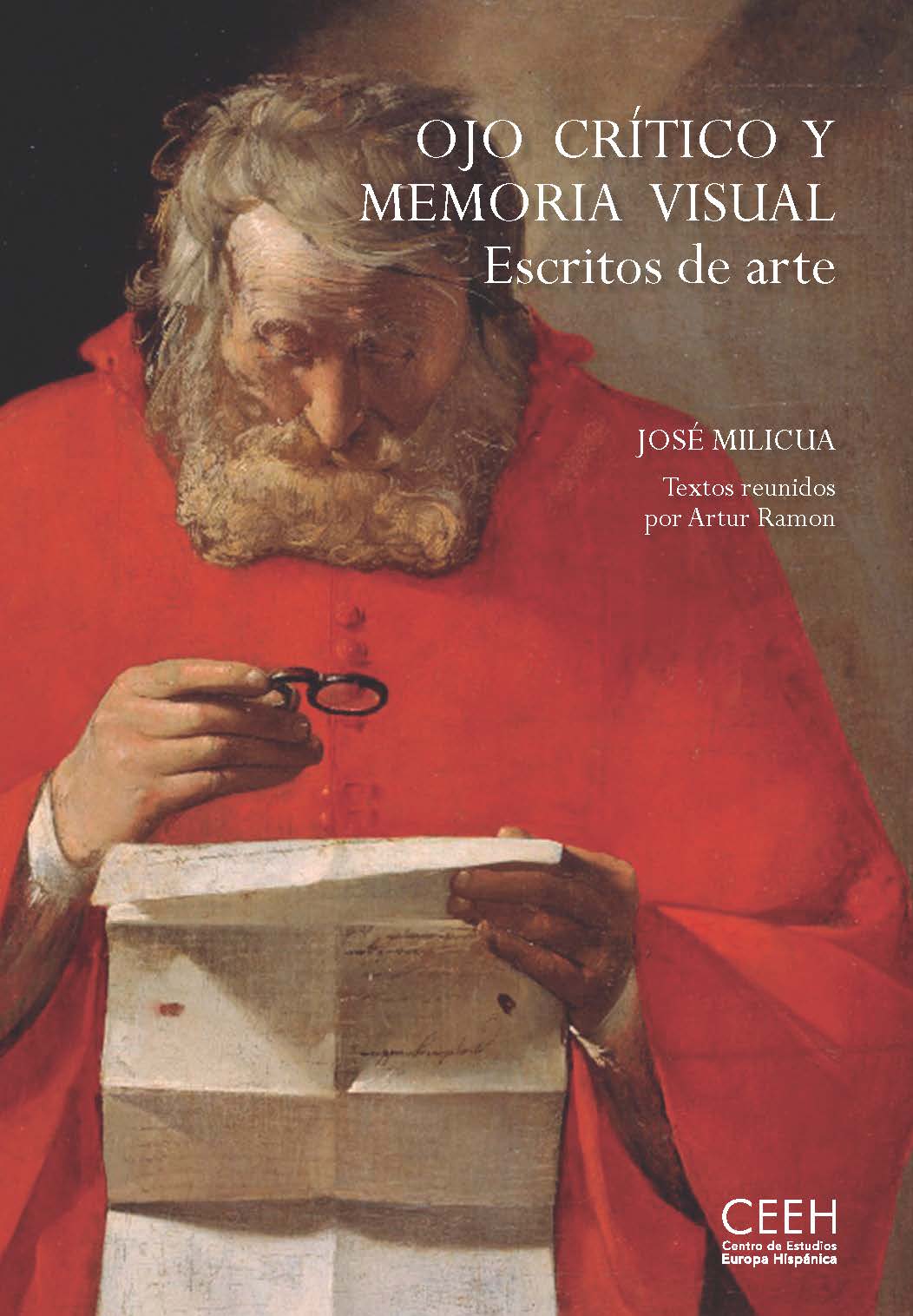Author
José Milicua
Characteristics
528 pages; 249 color illustrations; flapped paperback; 17 x 24,5 cm
Publication
Spanish; texts collected by A. Ramon; essays by A. Ramon, R. Vives, F. Bologna, J. Portús, L. Ruiz and P. Milicua; with the collaboration of the Museo Nacional del Prado; 2016
ISBN
978-84-15245-50-6
Price
€33,66
José Milicua carried out research like a scientist, spoke like a connoisseur and wrote like a poet. He brought a fresh intellectual approach to problems both old and new and restored iconographic studies to a scientific status. His literary talents – acknowledged after he translated the work of his master Roberto Longhi – spurred him to cultivate the art of writing about art and of transforming his descriptions into veritable ekphrases. With his visual memory and critical eye, he reasserted the role of the historian in interpreting works and taught generations of students to look at art.
He treated the great masters – El Greco, Caravaggio, Zurbarán, Ribera and Goya – with the same passion as artists of lesser fame, and his interests were wide ranging, from Cranach to Picasso. Although he is one of the most all-round art historians of twentieth-century Spain, his work is very little known. Fortunately, his pupil Artur Ramon has brought together Milicua’s best published writings and a few unpublished ones in this volume, which is both a tribute to his mastery and a testament to his legacy as a critic.
José Milicua (1921–2013) earned his degree and doctorate at the Univeristy of Barcelona. He was a professor of Art History and a member of the Royal Board of Trustees of the Museo Nacional del Prado. His main field of research was Spanish and Italian painting of the 1600s, on which he published studies in scientific journals and exhibition catalogues.
Public launch at the Museo Nacional del Prado
Public launch at the Palau Moja in Barcelona

